This past week (May 1st to be exact) marked the 10-year anniversary of Bar-i. We’re proud to have been partnering with a wide range of bars and restaurants for such a long period of time, and we have learned a tremendous amount about bar inventory through this process. Using all of the knowledge we’ve acquired over the past 10 years, we recently created a new software platform for our bar inventory system.
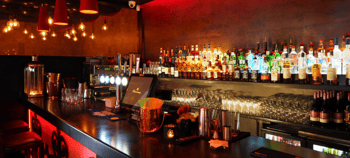 Our new software builds off the successes we’ve achieved with our previous platform, but we’ve streamlined it based on the needs of our clients. The updated version integrates with a broader range of platforms, allowing you to use it seamlessly with all of the other technology at your bar. We’re confident that our new software will provide an even better user experience, allowing you to get the most out of your inventory efforts while making the process even easier for your staff.
Our new software builds off the successes we’ve achieved with our previous platform, but we’ve streamlined it based on the needs of our clients. The updated version integrates with a broader range of platforms, allowing you to use it seamlessly with all of the other technology at your bar. We’re confident that our new software will provide an even better user experience, allowing you to get the most out of your inventory efforts while making the process even easier for your staff.
While there are some important updates and changes to our new software platform, some aspects of our service will remain the same. One of them is the method we use to count bottles. There are many options to accomplish this important task, but we believe weighing offers significant advantages over these other methods. For this reason, we will continue to count bottles by weighing them on scales.
Old School Counting Methods Fall Short in Many Ways
Many bars are still using the old school method of taking inventory using the tenthing system. This involves picking up a bottle and estimating how much is left. For example, ff you think there is approximately 60% left in a bottle of Jack Daniels, you’d enter 0.6 on your clipboard next to the entry for Jack Daniels.
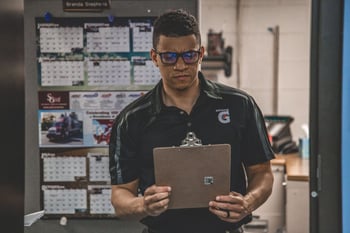 There are several problems with using the tenthing method:
There are several problems with using the tenthing method:
- Slow – You have to pick up each bottle, look at it and think for a moment about how much liquor is left in the bottle. You then have to look on your clipboard to find the line associated with this bottle in order to enter the count information. This process takes a lot more time than is necessary for the counting task.
- Inaccurate – A 1-liter bottle of alcohol contains approximately 34 oz., so when you take a tenth of that, you are measuring in 3.4 oz. increments. This isn’t a good fit since most standard drinks involve a 1.5 oz. serving. As a result, tenthing doesn’t let you accurately compare what was used vs. what was sold.
- Subjective – You can’t get an objective measurement from the tenthing process. You are essentially estimating how much you think is left in the bottle. This can be particularly challenging when you have bottles that come in unusual shapes. It’s easy to misjudge and say that a bottle is 50% full instead of 60% full. It’s also possible that different employees will estimate a different percentage for the same level in a bottle. This subjectivity makes your results even less accurate, and it becomes impossible to trust the data you get from your inventory counts.
- Manual process – After you finish entering your counts on a clipboard, you have to transfer that data to Excel or some other spreadsheet software on your computer. This adds unnecessary time to the counting process and increases the likelihood of making an error during the data transfer.
Due to these many drawbacks, the old school method of tenthing bottles and manually recording this information on a clipboard provides the worst user experience and delivers the least accurate results of any option you can use. There are many better ways to count inventory.
Tenthing with Technology Provides Some Improvements, but Still Has Serious Limitations
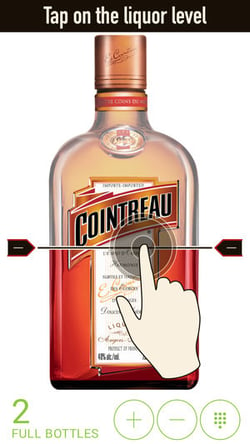 There are many bar inventory providers that have improved upon the tenthing method by automating the process using an app on your cell phone or tablet. These systems load a picture of the item being counted on your phone, and you indicate the level of alcohol left in the bottle on the side of the picture.
There are many bar inventory providers that have improved upon the tenthing method by automating the process using an app on your cell phone or tablet. These systems load a picture of the item being counted on your phone, and you indicate the level of alcohol left in the bottle on the side of the picture.
These app-based systems are a significant improvement on the old school clipboard method:
- Much faster than counting bottles manually using a clipboard
- Automate the process by recording information directly into the system, eliminating the need for manual data transfer from your clipboard onto Excel
However, there are still certain limitations associated with these app-based systems:
- Accuracy can be challenging – If you put the mark on the exact right spot on the picture of the bottle, this can be an accurate counting method. However, it can often be challenging to accurately mark the level on such a small picture of a bottle on your phone.
Some items, such as Bailey’s, come in opaque bottles which make it harder to see the exact level of liquor in the bottle. In addition, it is often hard to accurately determine where to leave the mark on a picture of an unusually shaped bottle such as Patron or Crown Royal.
While you are definitely getting a more accurate count than you get from the clipboard method, there’s still a lot of room for human error in identifying the precise place to mark the bottle. - Measuring increments don’t match serving sizes – This is essentially a fancier version of the tenthing method, using technology to provide a better user experience. As a result, you’re still not getting a good match between the increments being counted and the serving sizes you pour.
As with the clipboard method, you are still estimating the liquor level, which isn’t accurate enough to measure inventory down to the serving. Without a system that is precise enough to break your measurements into 1.5 oz. increments, it will be challenging to accurately compare what was used vs. what was sold. This level of detail is necessary if you want to use your inventory efforts to improve your profitability.
Real Time Liquor Control Systems Offer Some Interesting Benefits with Significant Limitations
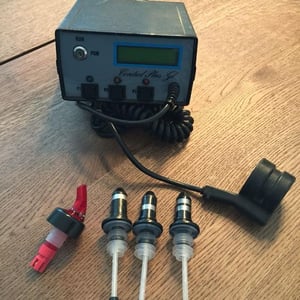 Liquor control systems provide a completely different way to count inventory. They measure the alcohol coming out of the bottle in real time. Measuring in real time provides a clever and effective way to address the shrinkage problem affecting many bars and restaurants. This method can significantly reduce overpouring due to carelessness, and it can cut down on your staff’s ability to give away drinks.
Liquor control systems provide a completely different way to count inventory. They measure the alcohol coming out of the bottle in real time. Measuring in real time provides a clever and effective way to address the shrinkage problem affecting many bars and restaurants. This method can significantly reduce overpouring due to carelessness, and it can cut down on your staff’s ability to give away drinks.
However, there are several reasons why these real time liquor control systems provide a less than ideal solution to counting inventory:
- You still need to do physical inventory – This system will accurately tell you how many 1.5 oz. servings you’ve poured during the inventory cycle. This ensures your data is being recorded in the proper increments, but the process doesn’t address full bottles in your storeroom. Therefore, you still have to go back and count all the full bottles to make sure nothing is missing. For example, if you started with 10 bottles of Grey Goose and sold 5 bottles in 1.5 oz. increments, you still need to do a physical count to verify that you have 5 bottles remaining on-hand.
- Upfront cost is high – You need to purchase meters for every bottle you serve. If you have a large product mix, this can be very costly.
- Visible to customers – Optics matter. You want to provide your customers with the best possible experience. When they see these meters on your bottles, it may give the impression that you are stingy with your pours, even if you are providing a full 1.5 oz. serving. Is it really worth making customers think you are serving skimpy drinks when there are other effective counting methods available?
- Doesn’t address bottled beers – Bottled beers can’t be measured with a flow meter. As a result, you will have to come up with a different way to count your bottled beer inventory each period. This makes your inventory process more cumbersome and complex.
Weighing Bottles Provides the Best User Experience and Most Accurate Results
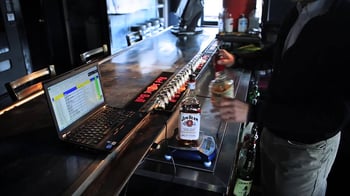 At Bar-i, we’ve been counting bottles using scales for a long time. We’ve thought long and hard about the ideal counting method to deliver the user experience and accurate results our clients need, and we’ve found that weighing is by far the most effective option.
At Bar-i, we’ve been counting bottles using scales for a long time. We’ve thought long and hard about the ideal counting method to deliver the user experience and accurate results our clients need, and we’ve found that weighing is by far the most effective option.
You’ll experience the following advantages when you count inventory by weighing bottles:
- Accuracy – Our new scale is accurate to the tenth of an ounce. This is significantly more precise than the 1.5 oz. serving increments used as a standard pour by most bars. As a result, our scales can calculate usage down to the serving with an extremely high degree of accuracy.
- Speed – You can weigh each bottle in about 2 seconds. This means you are able to count bottles as fast as you can pick them up. There is no faster method to count bottles than weighing them.
- Objectivity – You will get an accurate and objective measurement every time bottles are weighed. The measurement will be exactly the same regardless of who is performing the count or how much attention to detail they have.
- Ability to perform level 3 inventory – When you have inventory methods that are accurate down to the serving, you can match up your inventory usage to sales with a very high level of precision. This allows you to use inventory as a profitability tool (level 3 inventory).
That being said, no counting method is perfect. While we truly believe that these benefits make weighing the clear choice to provide you with the best user experience and most accurate results, there are a few drawbacks to this process:
- Hardware adds complexity to your process – With the app-based systems, you simply download their app and you are up and running instantly. This allows you to start using your new system right away. When you weigh bottles to count inventory, you have to buy the hardware (scale) and wait until it is shipped to your bar to start using the system.
You will also have to make sure your scale is fully charged before counting inventory, which adds an extra layer of complexity to the process. However, if you make charging your scale after each inventory count part of the protocol, you shouldn’t encounter a situation where the scale runs out of power during your count. - Upfront cost – Our new scale costs $60 and will be available for sale on our website once our new software is released later this month. This is a relatively moderate cost for a piece of hardware that provides so many benefits to your inventory process, and you will quickly recoup that cost from the increased profits generated when you reduce shrinkage (Bar-i clients reduce their liquor cost by 3% on average).
- Data requirements are necessary to make the process work properly – You need to know how much a glass bottle weighs (tare weight) in order to determine how much the alcohol inside the bottle weighs. You also need to know the density of the liquids. When measuring volume using weight, you have to know the density in order to convert the weight into volume.
The good news is that the tare weights and density factors are built into the new Bar-i software so when you use our scales with our software, it eliminates this added level of complexity from your process.
The Best Fit for Your Bar Depends on Your Goals
As with anything in life, there is no one right solution for everyone. The best inventory solution for you will depend on your specific goals. App-based systems are a great option if your primary objective is to save time and automate your inventory process. However, if you’re interested in getting the level 3 inventory data that can help you improve the profitability of your bar, weighing bottles is the best solution to provide you with the results you’re looking to achieve.
If you’d like to find out how Bar-i can help you streamline your processes and maximize your profits, please contact us today to schedule a free consultation. We serve bars and restaurants nationwide from our offices in Denver, Colorado.


-1.png)